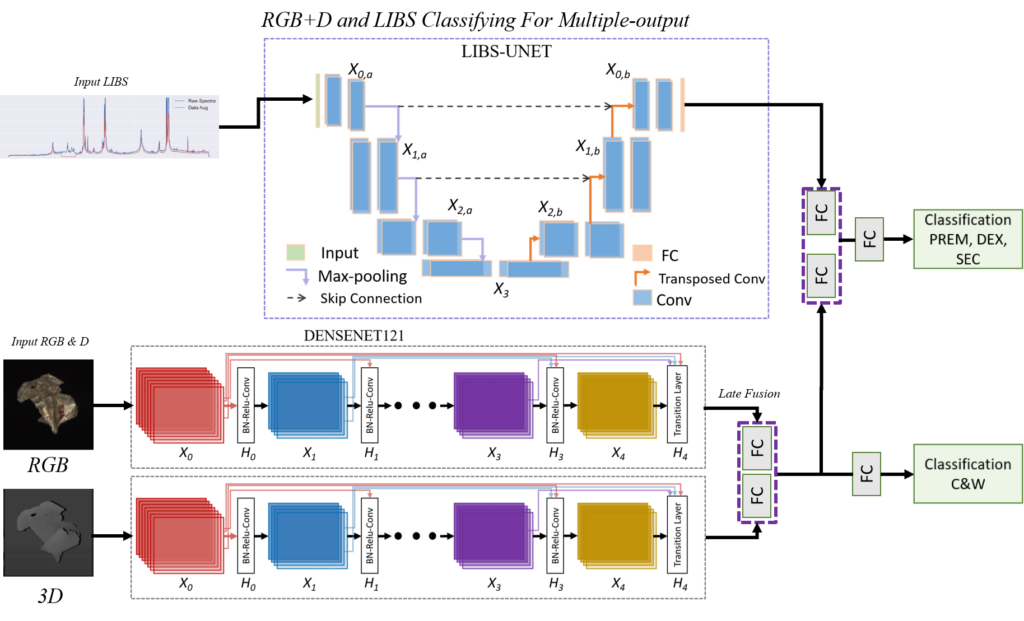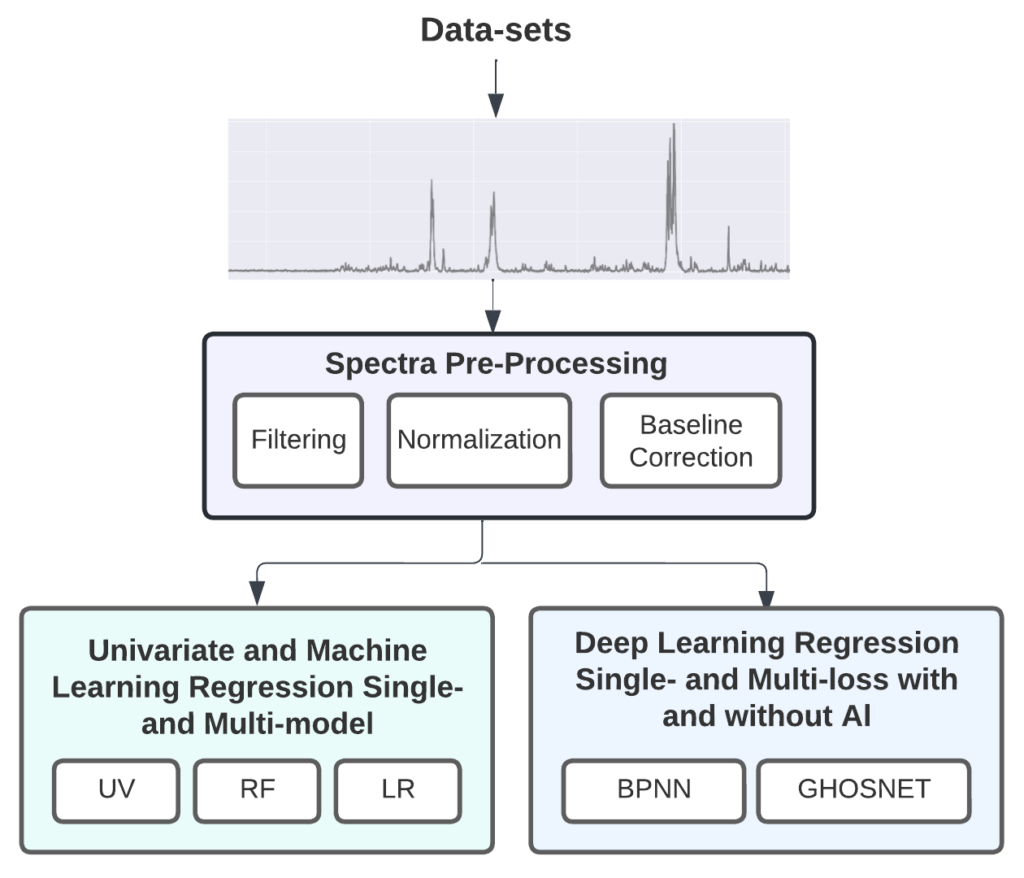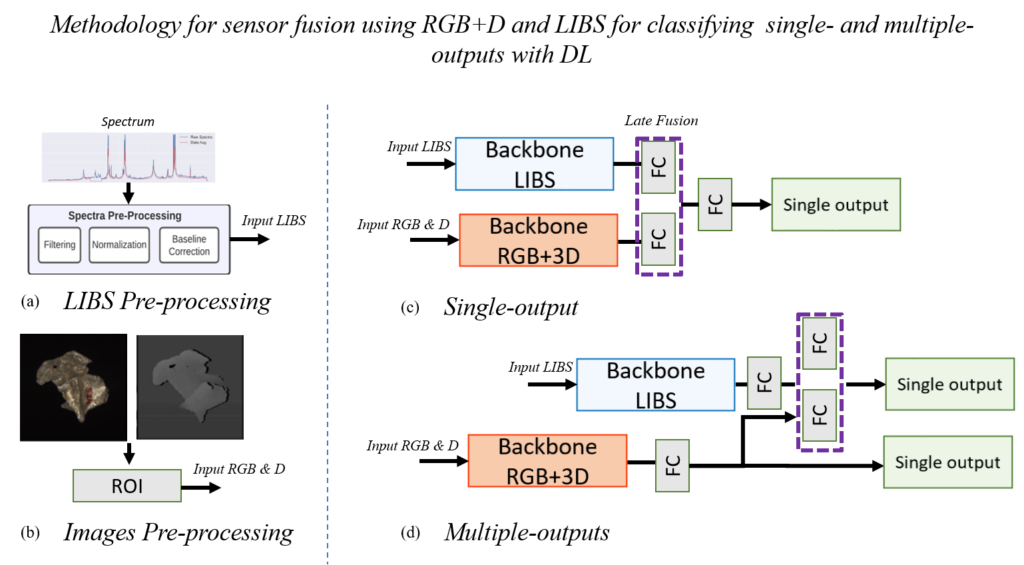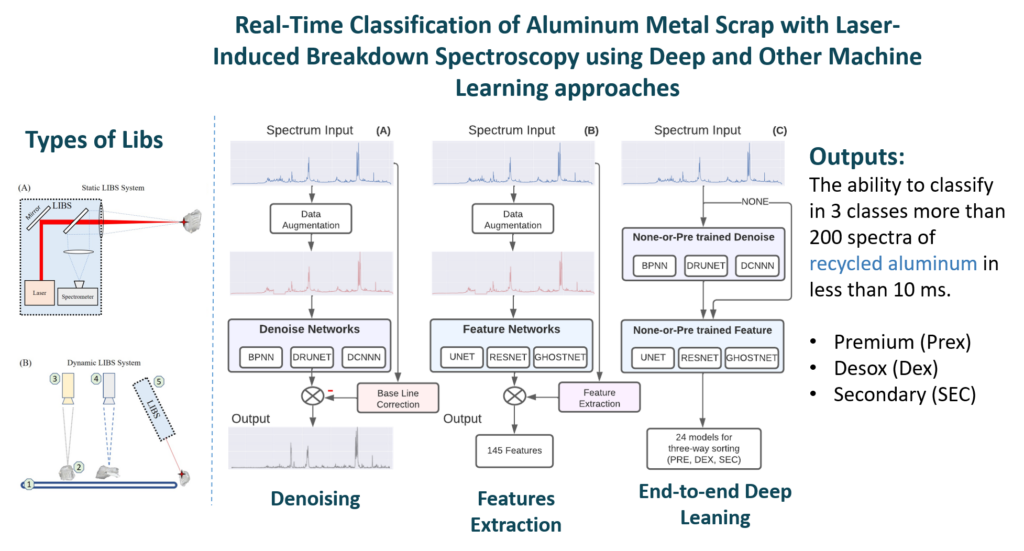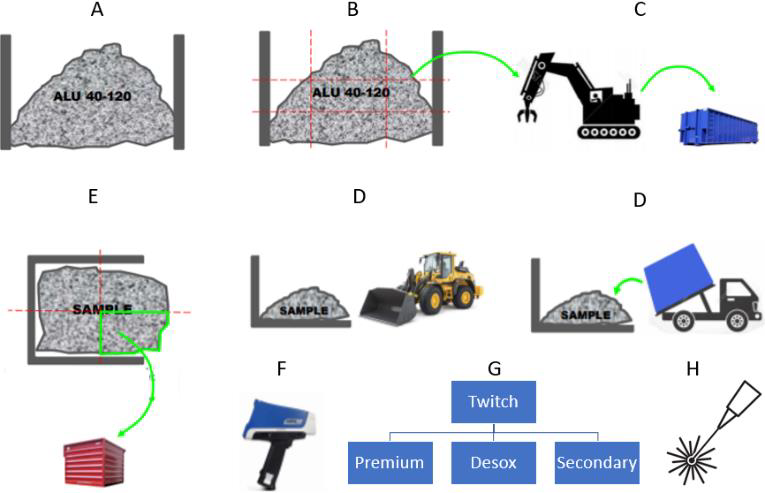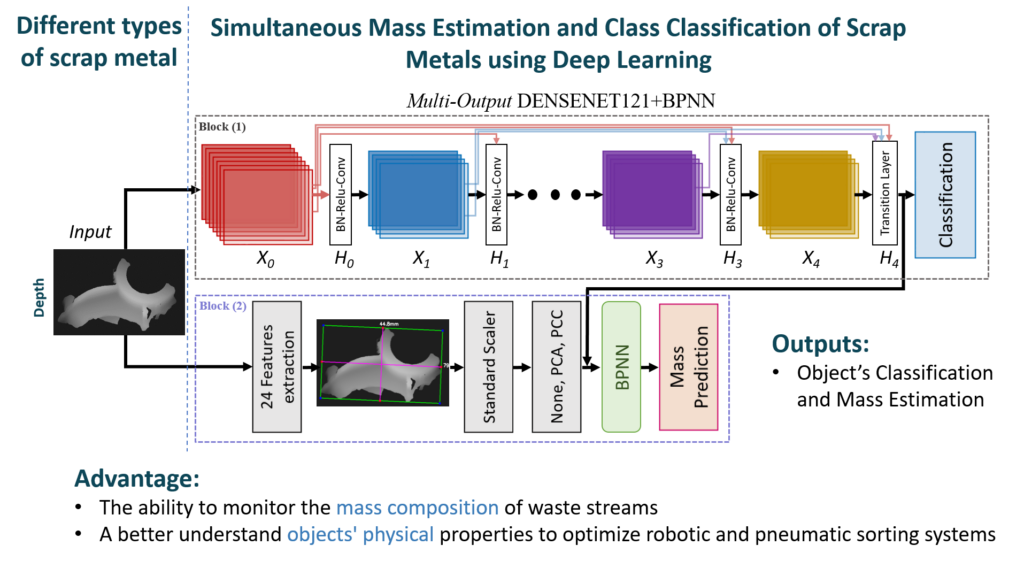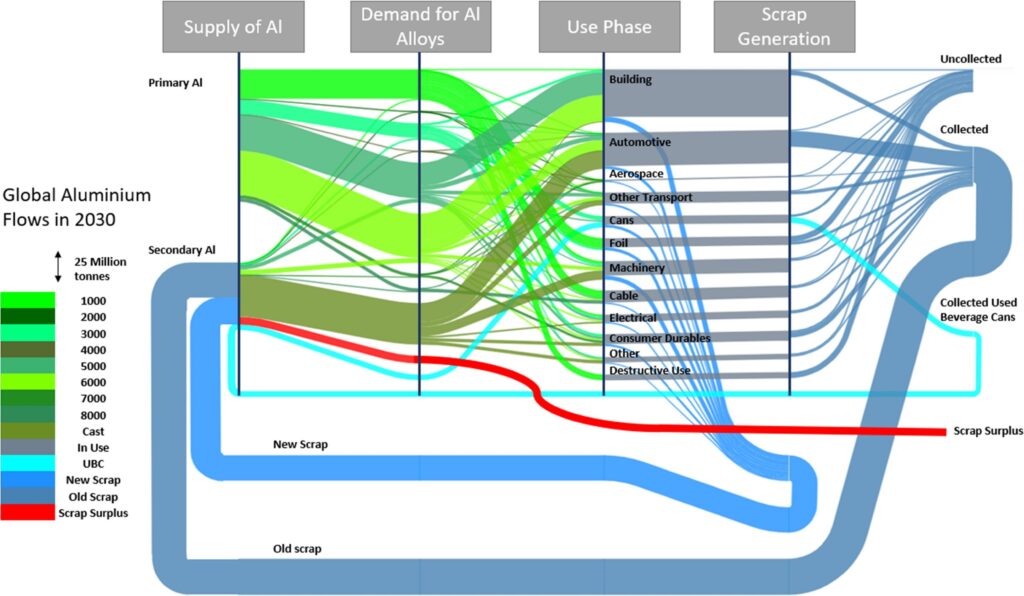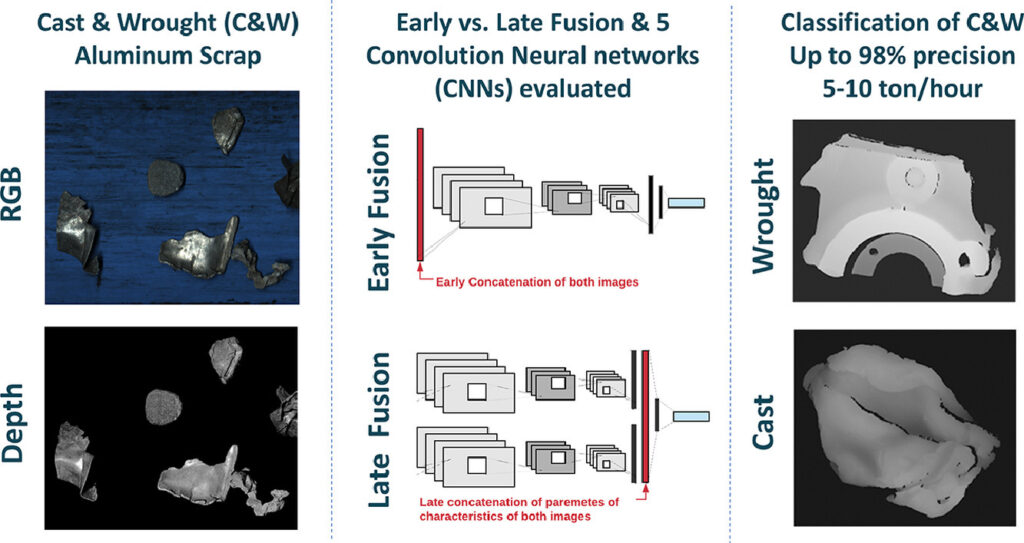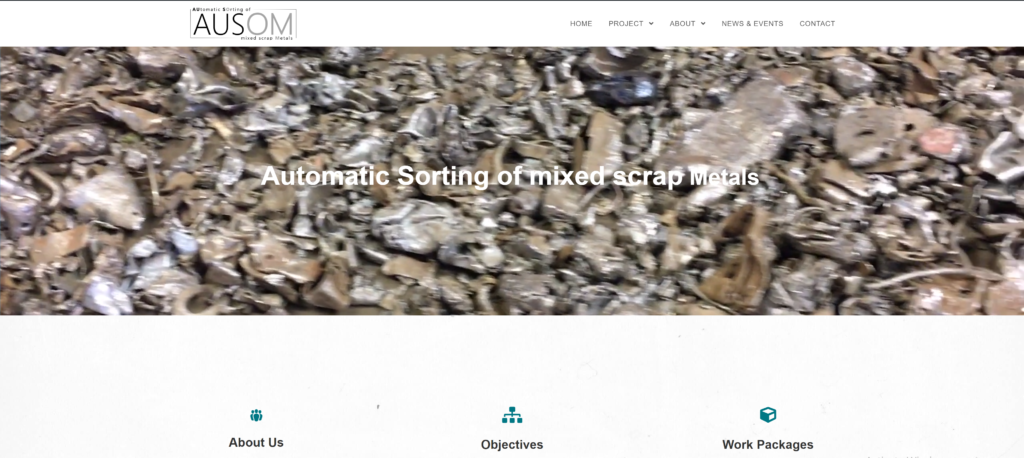Our New article is out, and you can read it in the following link for the first 50 days “Classification of aluminum scrap by laser-induced breakdown spectroscopy (LIBS) and RGB + D image fusion using deep learning approaches.”
Integrating multi-sensor systems to sort and monitor complex waste streams is one of the most recent innovations in the recycling industry. The complementary strengths of Laser-Induced Breakdown Spectroscopy (LIBS) and computer vision systems offer a novel multi-sensor solution for the complex task of sorting aluminum (Al) post-consumer scrap into alloy groups. This study presents two […]
Read MoreOur New pre-printed: Deep Learning Regression for Quantitative LIBS Analysis of Aluminium Scrap
This study presents two novel methods for fusing RGB and Depth images with LIBS using Deep Learning models. The first method is a single-output model that combines LIBS UNET and two DenseNets in a late fusion framework. The second method is a multiple-output model that uses the structure of the single-output model to enhance learning […]
Read MoreOur new pre-printed paper, “Classification of Aluminum Scrap by Laser Induced Breakdown Spectroscopy (LIBS) and RGB+D Image Fusion Using Deep Learning Approaches” is out 🙂
We are focusing to show how #rgb + #3d and #libs systems can be fused to improve the classification of scrap #aluminium. This presents a new multi inputs and outputs #deeplearning structure that encompasses the excellent potential for sorting #postconsumer aluminum scrap. http://ssrn.com/abstract=4272447
Read MoreOur new article is out: Real-time classification of aluminum metal scrap with laser-induced breakdown spectroscopy using deep and other machine learning approaches.
In this study, the use of Laser-Induced Breakdown Spectroscopy (LIBS), Machine Learning (ML), and Deep Learning (DL) for the three-way sorting of Aluminum (Al) is proposed. Two sample sets of Al scrap are used: one containing 733 pieces for pre-training and validation with a ground truth of X-Ray Fluorescence (XRF), and the second containing 210 […]
Read MoreAssessing the efficiency of Laser-Induced Breakdown Spectroscopy (LIBS) based sorting of post-consumer aluminium scrap !!
The life cycle engineering (LCE) research group (SIM² – KU Leuven) of the KU Leuven has demonstrated the capability of LIBS in combination with machine learning techniques to sort aluminium post-consumer scrap into commercially interesting fractions. The proposed sorting targets enable increased wrought-to-wrought recycling and are an alternative for the current downcycling dynamic of aluminium scrap. https://www.sciencedirect.com/science/article/pii/S2212827122000464
Read MoreSimultaneous Mass Estimation and Class Classification of Scrap Metals using Deep Learning
The KU Leuven’s lifecycle engineering (LCE) research group (SIM² – KU Leuven) and EAVISE Research Group have explored a new methodology for mass estimation and classification of scrap metals using Deep Learning. The presented research is an essential step towards improved metal sorting and recycling. The proposed research developed is capable of monitoring the composition […]
Read MoreForecasting global aluminium flows !!
The lifecycle engineering (LCE) research group (SIM² – KU Leuven) of the KU Leuven allows to estimate that the global aluminium scrap surplus will emerge soon and reach a size of 5.4 million tonnes by 2030 and 8.7 million tonnes by 2040, if currently adopted aluminium sorting and recycling methods are not improved. Here is […]
Read MoreCast and Wrought Detection Article !!
The lifecycle engineering (LCE) research group (SIM² – KU Leuven) of the KU Leuven has explored a new method to classify between Cast- and Wrought-Aluminum. Scrap. The presented research is also considered an essential first step towards improved non-ferrous metal sorting and recycling. Therefore, the proposed research develops an efficient method to classify Cast and […]
Read MoreOur project website goes online
We are proud to announce the first release of our AUSOM website. We’re very anxious to your reaction. If you have any comments or questions concerning the website or the AUSOM project, please contact us.
Read More
